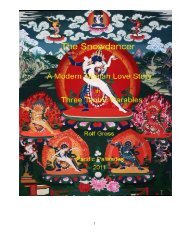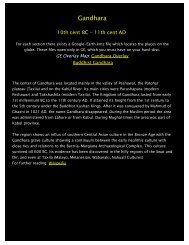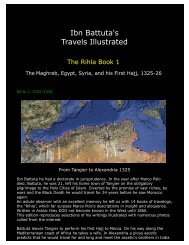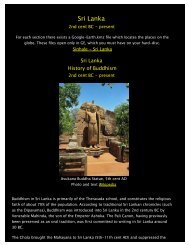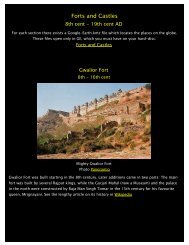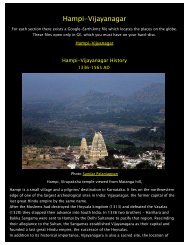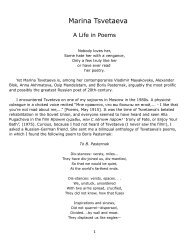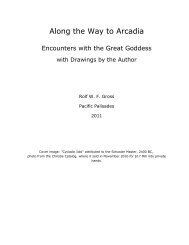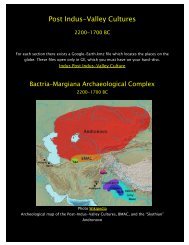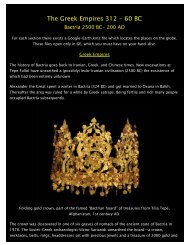Indus Valley Civilization - Rolf Gross
Indus Valley Civilization - Rolf Gross
Indus Valley Civilization - Rolf Gross
- No tags were found...
Create successful ePaper yourself
Turn your PDF publications into a flip-book with our unique Google optimized e-Paper software.
Archaeologists divide the occupation at the site into several periods. Mehrgarh Period I7000 BC–5500 BC,was Neolithic and aceramic (i.e., without the use of pottery). Theearliest farming in the area was developed by semi-nomadic people using plants suchas wheat and barley and animals such as sheep,goats and cattle. The settlement wasestablished with simple mud buildings with four internal subdivisions. Numerousburials have been found, many with elaborate goods such as baskets, stone and bonetools, beads,bangles,pendants and occasionally animal sacrifices,with more goods leftwith burials of males.Mehrgarh Period II 5500 BC–4800 BC and Merhgarh Period III 4800 BC–3500 BC wereceramic Neolithic (i.e. pottery was now in use) and later chalcolithic.Much evidence ofmanufacturing activity has been found and more advanced techniques were used.Glazed faience beads were produced and terracotta figurines became more detailed.Figurines of females were decorated with paint and had diverse hairstyles andornaments.Clay figurines from Mehrgarh (3000 BC)Photo from crystallinks.comSomewhere between 2600 BC and 2000 BC, the city seems to have been largelyabandoned, which is when the <strong>Indus</strong> <strong>Valley</strong> Civilisation was in its middle stages ofdevelopment. It has been surmised that the inhabitants of Mehrgarh migrated to thefertile <strong>Indus</strong> valley as Balochistan became more arid due to climatic changes.Text and photos (except where noted) from Wikipedia



